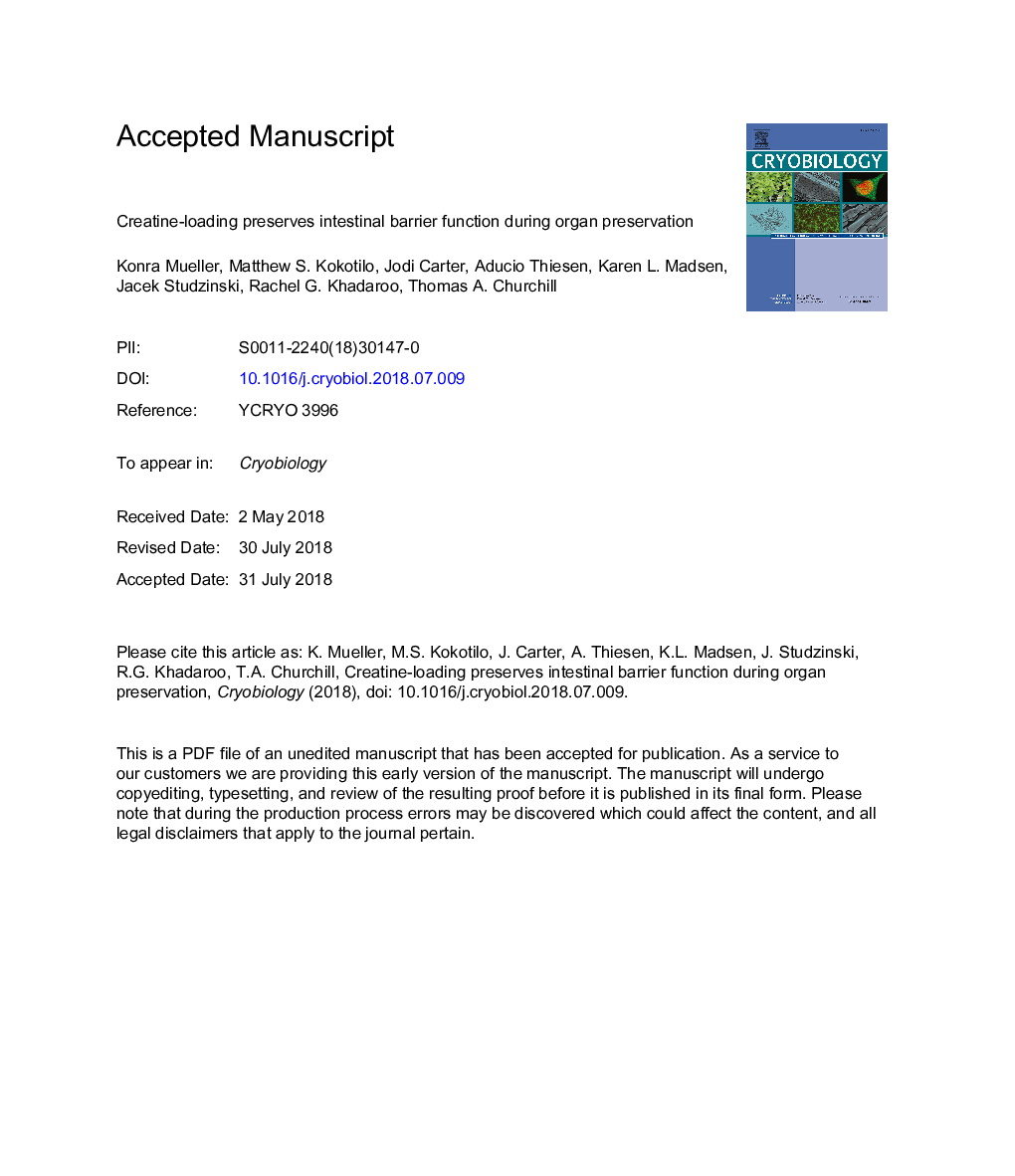| Article ID | Journal | Published Year | Pages | File Type |
|---|---|---|---|---|
| 10157778 | Cryobiology | 2018 | 32 Pages |
Abstract
Our data indicate that creatine loading has significant impact on energy levels during storage with corresponding improvements in mucosal structure and function. Both of our rodent models, a) continuous perfusion for 4â¯h and b) a single flush with our intraluminal preservation solution supplemented with 50â¯mM creatine, demonstrated significant improvements in creatine phosphate, ATP, Energy Charge and ATP/AMP following cold storage (Pâ¯<â¯0.05). Notably, after 10â¯h creatine phosphate was 324% greater in Creatine-treated tissues compared to Controls (Pâ¯<â¯0.05). Preferential utilization of glutathione in the Creatine group was effective at controlling oxidative injury after 10â¯h storage (Pâ¯<â¯0.05). Improvements in barrier function and electrophysiology with creatine-treatment reflected superior mucosal integrity after 10â¯h storage; Permeability and Transepithelial resistance measurements remained at fresh tissue values. This was in stark contrast to Control tissues in which permeability rose to >300% of fresh tissue values (Pâ¯<â¯0.005) and transepithelial resistance dropped by 95% (Pâ¯<â¯0.005). After 10â¯h storage, Park's grading of histologic injury reflected extensive villus denudation (grade 4) in control tissues compared to healthy tissue (grade 0) in the Creatine group. This study demonstrates that a strategy of creatine supplementation of our intraluminal preservation solution facilitates the preservation of the intestinal mucosa during storage.
Keywords
Related Topics
Life Sciences
Agricultural and Biological Sciences
Agricultural and Biological Sciences (General)
Authors
Konra Mueller, Matthew S. Kokotilo, Jodi M. Carter, Aducio Thiesen, Karen L. Madsen, Jacek Studzinski, Rachel G. Khadaroo, Thomas A. Churchill,
